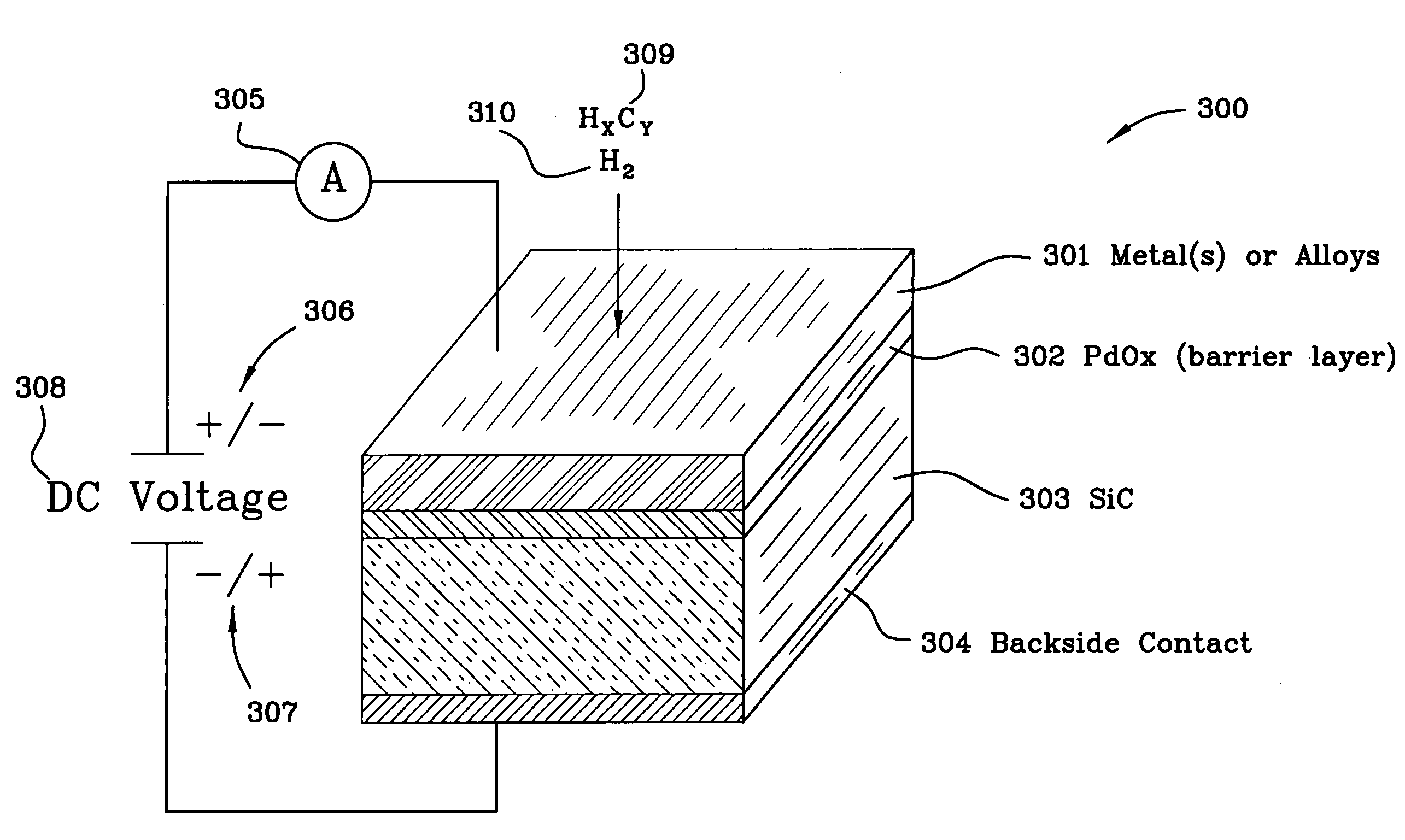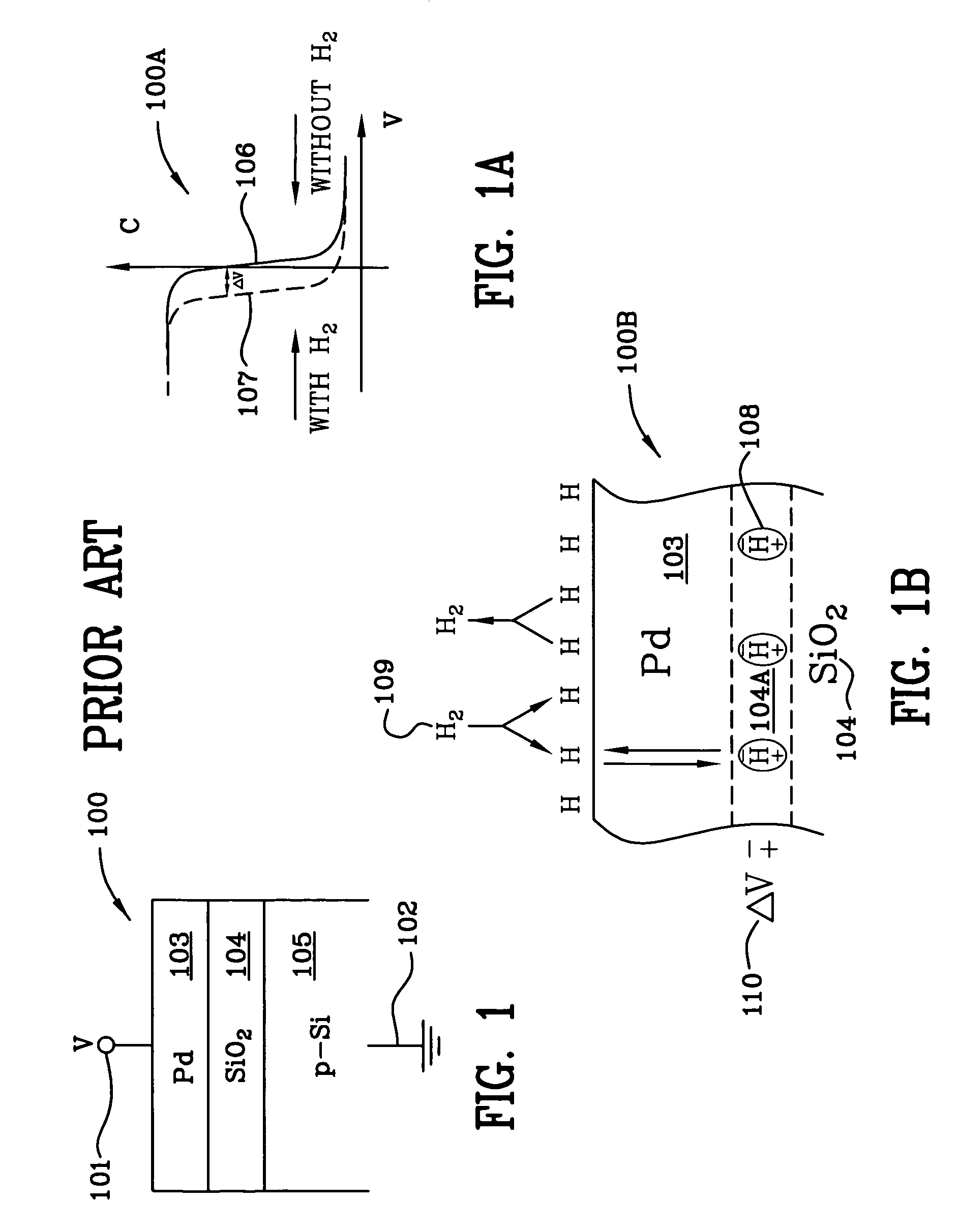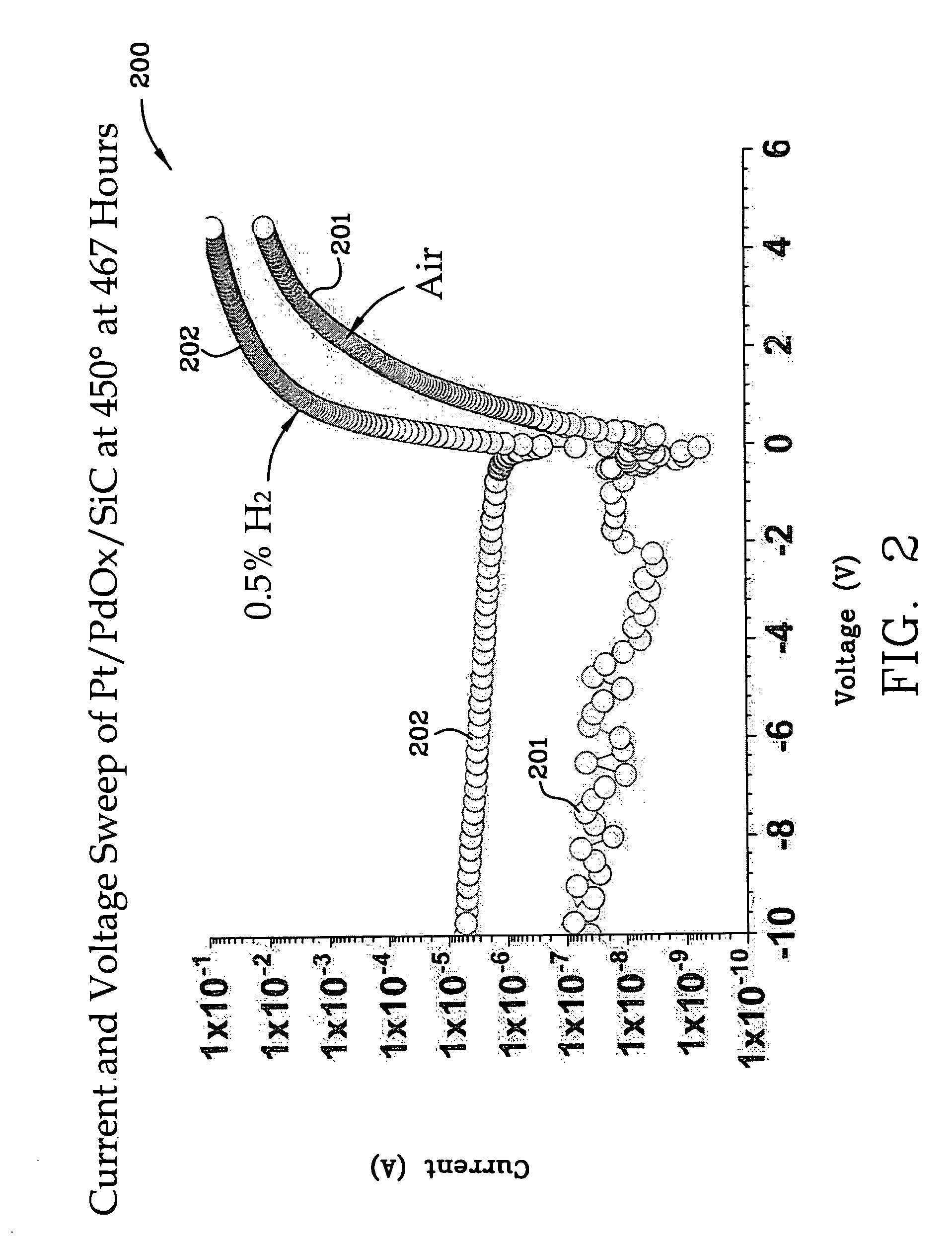Miniaturized metal (metal alloy)/ PdOx/SiC hydrogen and hydrocarbon gas sensors
a technology of hydrogen and gas sensors, which is applied in the field of miniaturized metals (metal alloys)/pdox/sic hydrogen and hydrocarbon gas sensors, can solve the problems of inability to detect explosive limits, limited hydrogen sensitivity of sensors, and difficulty in detecting explosive limits, etc., and achieves high sensitivity, small size, and high stability.
- Summary
- Abstract
- Description
- Claims
- Application Information
AI Technical Summary
Benefits of technology
Problems solved by technology
Method used
Image
Examples
Embodiment Construction
[0065]The present invention comprises a miniaturized Schottky diode hydrogen and hydrocarbon sensor with the structure of catalytic sensing metal-palladium oxide barrier interlayer-semiconductor substrate layer to detect hydrogen and hydrocarbon gases at elevated temperatures. The metal-metal oxide-semiconductor structure provides a stable and sensitive hydrogen gas detection device that is resistant to oxidative degradation and silicide formation. The sensitivity of the device is achieved through the use of a metal such as platinum or palladium in the catalytic sensing layer which is sensitive to hydrogen and hydrocarbons but resistant to significant oxidation. The barrier interlayer is resistant to oxygen and prevents reaction between the catalytic sensing metal layer and the semiconductor substrate layer. These unwanted reactions lead to the formation of silicides which affect the surface states of the SiC interface. As a result, formation of silicide can lead to disruption of th...
PUM
| Property | Measurement | Unit |
|---|---|---|
| thick | aaaaa | aaaaa |
| thick | aaaaa | aaaaa |
| thick | aaaaa | aaaaa |
Abstract
Description
Claims
Application Information
 Login to View More
Login to View More - R&D
- Intellectual Property
- Life Sciences
- Materials
- Tech Scout
- Unparalleled Data Quality
- Higher Quality Content
- 60% Fewer Hallucinations
Browse by: Latest US Patents, China's latest patents, Technical Efficacy Thesaurus, Application Domain, Technology Topic, Popular Technical Reports.
© 2025 PatSnap. All rights reserved.Legal|Privacy policy|Modern Slavery Act Transparency Statement|Sitemap|About US| Contact US: help@patsnap.com



